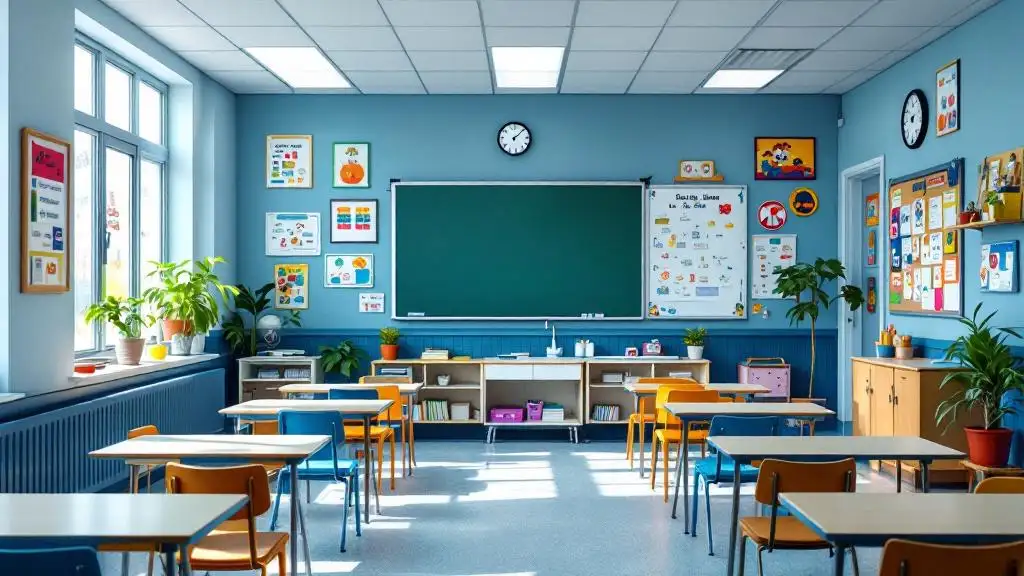What is the Sensory Processing Disorder ICD-10 Code?
Introduction to Sensory Processing Disorder and ICD Coding
Sensory Processing Disorder (SPD) is a neurological condition characterized by atypical responses to sensory stimuli. Although it has gained recognition among clinicians and therapists, SPD does not yet have a dedicated and official classification within the ICD-10 system. This article explores how SPD is represented in ICD-10, the relevant codes used for diagnosis, and what this means for patients, clinicians, and researchers.
The Role of ICD-10 in Classifying Developmental Disorders

What is the ICD-10 code for Sensory Processing Disorder?
The ICD-10 code for Sensory Processing Disorder (SPD) is F84.9. This classification falls under the broader category of "Pervasive Developmental Disorder, unspecified". While F84.9 broadly encompasses developmental disorders affecting communication and social interaction, SPD itself is often viewed as a specific presentation within this spectrum.
Since SPD is not officially listed as a separate diagnosis in ICD-10, clinicians frequently use F84.9 to document cases involving sensory processing difficulties. Proper coding is essential not only for accurate diagnosis but also for securing appropriate treatments and support services. Healthcare professionals—such as occupational therapists—consider the individual's specific sensory challenges when selecting the most appropriate code.
How is Sensory Processing Disorder classified and coded in ICD-10?
SPD does not currently have its own dedicated ICD-10 code. Instead, clinicians often assign broader diagnostic codes to represent related symptoms and conditions. Common choices include F88, which stands for "Other Disorders of Psychological Development" and covers various neurodevelopmental issues that involve sensory processing or integration problems.
Related codes also include F84.0, used for "Childhood autism", and F84.9, as previously mentioned. For cases involving hyperesthesia or increased sensory sensitivity, ICD-10 provides R20.3. However, these codes are not specific to SPD and can create challenges in diagnosis consistency and insurance reimbursement.
What does the ICD-10 code F88 represent in relation to sensory processing issues?
The code F88 in ICD-10 signifies "Other Disorders of Psychological Development." It is used for conditions involving developmental delays and difficulties, including sensory integration issues associated with SPD. The description indicates that F88 serves as an umbrella category for various neurodevelopmental problems that do not fit neatly into other specific diagnoses.
Is Sensory Processing Disorder recognized with a specific ICD-10 code?
Currently, SPD lacks a dedicated ICD-10 code, which can lead to its classification under broader categories such as F88 or F84.0. This lack of specificity means that clinicians often rely on related codes that describe developmental delays or neurobehavioral symptoms.
This scenario can impact insurance reimbursement, epidemiological tracking, and research efforts, as the precise identification of SPD is limited within the current classification system.
Has Sensory Processing Disorder updated its classification in ICD-11?
In ICD-11, released in 2018 and adopted globally from January 2022, there is movement toward better recognition of neurodevelopmental and sensory issues. While there is no specific ICD-11 code for SPD, sensory-related symptoms are integrated within the diagnostic criteria for Autism Spectrum Disorder (ASD). This allows for a more comprehensive understanding of sensory difficulties as part of ASD rather than as a standalone diagnosis.
Therefore, although SPD itself hasn't received a dedicated classification in ICD-11, its features are more explicitly acknowledged within existing frameworks.
Is there an official diagnostic code for sensory processing difficulties in DSM-5?
In the DSM-5, no standalone code or diagnosis explicitly covers sensory processing disorder. Instead, related symptoms—such as hyperreactivity or hyporeactivity to sensory stimuli—are recognized but categorized within broader diagnostic frameworks.
Borrowing from ICD-10-CM, clinicians may code associated sensory issues using codes like R20.3. Nonetheless, these do not serve as official DSM diagnoses. The absence of an official DSM-5 code underscores ongoing debate and research into SPD's classification.
What is the current understanding and classification of Sensory Processing Disorder?
SPD is understood as a condition in which the brain has difficulty accurately receiving and responding to sensory information. Individuals may experience hypersensitivity (over-responsiveness) or hyposensitivity (under-responsiveness) across various senses.
Although SPD is not formally recognized as a distinct disorder in major manuals like DSM-5, it is often associated with autism spectrum disorder, ADHD, and other neurodevelopmental conditions. Symptoms include overreactions to sensory stimuli, sensory seeking behaviors, and coordination challenges.
Diagnosis primarily involves clinical observation, caregiver reports, and standardized assessments conducted by trained professionals like occupational therapists. Treatment typically involves sensory integration approaches aimed at helping individuals modulate sensory input more effectively.
Overall, while SPD remains unclassified in some systems, its recognition continues to grow within clinical practice, and future revisions of classification systems may offer more precise codes.
Final Thoughts on ICD Coding for SPD
While no specific ICD-10 code is dedicated solely to Sensory Processing Disorder, clinicians utilize existing broader codes such as F84.9 and F88 to document sensory challenges. Recognizing the limitations of current classifications, ongoing updates and revisions aim to improve the recognition and coding of sensory processing issues, ultimately facilitating better diagnosis, treatment, and research. For healthcare providers, understanding these coding nuances is vital for accurate documentation and access to resources, supporting individuals with SPD in achieving improved quality of life.
References
- What is the Sensory Processing Disorder ICD-10 Code?
- Sensory processing disorder - TheraPlatform
- What is the Sensory Processing Disorder ICD-10 Code?
- What is the Sensory Processing Disorder ICD-10 Code?
- Sensory processing disorder - TheraPlatform
- What is the Sensory Processing Disorder ICD-10 Code?
- What is the Sensory Processing Disorder ICD-10 Code?
- Sensory processing disorder - TheraPlatform
- What is the Sensory Processing Disorder ICD-10 Code?
- What is the Sensory Processing Disorder ICD-10 Code?
Other articles
Recent articles

How Schools Can Support Autistic Students In Career Prep

Best Strategies For Autism-Friendly Event Planning

Understanding Noncontingent Reinforcement In Autism Behavior Plans

How Drama Therapy Benefits Autistic Individuals

Best Practices For Autism-Friendly Fitness And Recreation Centers

Best Ways To Promote Healthy Social Media Use For Autistic Teens

How To Help Autistic Children Cope With Public Speaking

Autism And Strategies For Managing Unexpected Changes

Best Podcasts About Autism For Parents And Educators

Autism And The Impact Of Seasonal Changes On Behavior

The Role Of Diet In Managing Co-Occurring Conditions With Autism

Sleep Challenges In Autism And Practical Solutions

Best Ways To Build Daily Routines For Autistic Children

Best Practices For Supporting Autistic Entrepreneurs

Autism And Strategies For Navigating Large Social Gatherings

Adaptive Sports And Recreational Activities For People With Autism

Autism And The Benefits Of Story-Based Learning Activities

Understanding The Role Of Play In Autism Development

Autism And The Impact Of Environmental Noise On Learning

How To Create Autism-Friendly Community Spaces

Autism And Chronic Health Conditions: What To Know

The Role Of Care Managers In Autism Life Planning

How To Teach Social Boundaries To Autistic Children

How Autistic Individuals Experience Empathy Differently

How To Support Autistic Employees In Remote Work Settings

Autism And The Relationship Between Motor Skills And Learning

How To Create Community Resource Guides For Autism Families

How To Teach Daily Living Skills To Autistic Teens

Autism And The Impact Of Mind-Body Practices On Stress Reduction

Autism And The Benefits Of Outdoor Group Activities

How To Create Autism-Friendly Sensory Paths In Schools

Best Practices For Autism-Friendly Park And Recreation Areas

Autism And Strategies For Reducing School Refusal

Supporting Autistic Individuals In Public Speaking

The Role Of Diet In Managing Autism Symptoms

The Benefits Of Gardening Clubs For Autism Social Development

How To Prepare Autistic Children For Dental Visits

Autism And Employment: Career Paths That Work

Best Practices For Autism-Friendly Hotels And Lodging

The Impact Of Screen Time On Autism Development

Autism Screening Tools For Early Childhood

The Role Of Physical Exercise In Autism Therapy

Best Strategies For Supporting Autistic College Students

The Role Of Technology In Autism Early Detection

Sensory-Friendly Classroom Design Ideas For Autistic Students

The Role Of Speech Therapy In Building Social Communication Skills

Best Strategies For Handling Autistic Burnout In Adults

Autism And The Importance Of Predictability In Routine

Autism And Peer Education: Teaching Acceptance In Schools

Best Practices For Sensory-Friendly Libraries And Reading Rooms

Self-Advocacy Skills For Autistic Adults

The Role Of Technology In Autism Peer Communication

Promoting Physical Activity In Children With Autism

How To Prepare Autistic Children For Medical Procedures

The Role Of Social Media In Autism Advocacy And Awareness

The Impact Of Sensory Rooms In Public Facilities For Autism

How To Create An Autism-Friendly Holiday Celebration

Best Practices For Inclusive Education For Autistic Students

Autism And Mental Health: Recognizing Signs Of Distress

Best Practices For Sensory-Friendly Waiting Rooms

The Role Of Teachers In Early Autism Red Flag Identification

Autism-Friendly Housing Design Features

Autism-Friendly Housing Design Features

How Environmental Modifications Improve Autism Outcomes

Autism And Technology-Based Learning Tools

Supporting Autistic Children Through Changes In Routine

The Link Between Autism And Working Memory Challenges

Best Practices For Autism-Friendly Cooking Classes

Autism And The Benefits Of Structured Music Lessons

Best Books To Teach Kids About Autism Acceptance

Sensory Diets And Their Benefits For Autism Management

How To Prepare Autistic Teens For Driver’s Education

How To Teach Autistic Teens About Healthy Relationships

The Role Of Visual Prompts In Building Daily Habits For Autism

Addressing Sleep Regression In Children With Autism

Understanding Social Stories And How They Help Autistic Children

Navigating Insurance Coverage For Autism Therapy Services

How To Prepare Autistic Adults For Independent Travel

Supporting Autistic Individuals In Volunteer Work

How Mindfulness Practices Can Support Autism Well-Being

Understanding Hyperfocus And Special Interests In Autism

Understanding Stimming As A Self-Regulation Tool

Sensory-Based Interventions For Autism At Home

Best Ways To Introduce Self-Advocacy In Autistic Teens

Best Ways To Support Autistic Employees In Customer Service Roles

Best Practices For Autism-Friendly Volunteer Programs

Autism And The Benefits Of Sensory Play For Emotional Growth

Autism And Strategies For Building Peer Relationships

Understanding How Autism Affects Memory Processing

Autism And Strategies For Building Coping Skills In Teens

The Role Of Parent Training In Autism Intervention Programs

Autism-Friendly Workplace Accommodations

Using Visual Timers For Autism Time Management

What Is ABA Therapy?

Autism and Sleep

Do Plastic Toys Cause Autism?

Autism Facial Expressions

Autism and Motor Skills

Which Parent Carries The Autism Gene?

Autism Symbols & Colors
We’re All About You, Your Family, and Your Child

